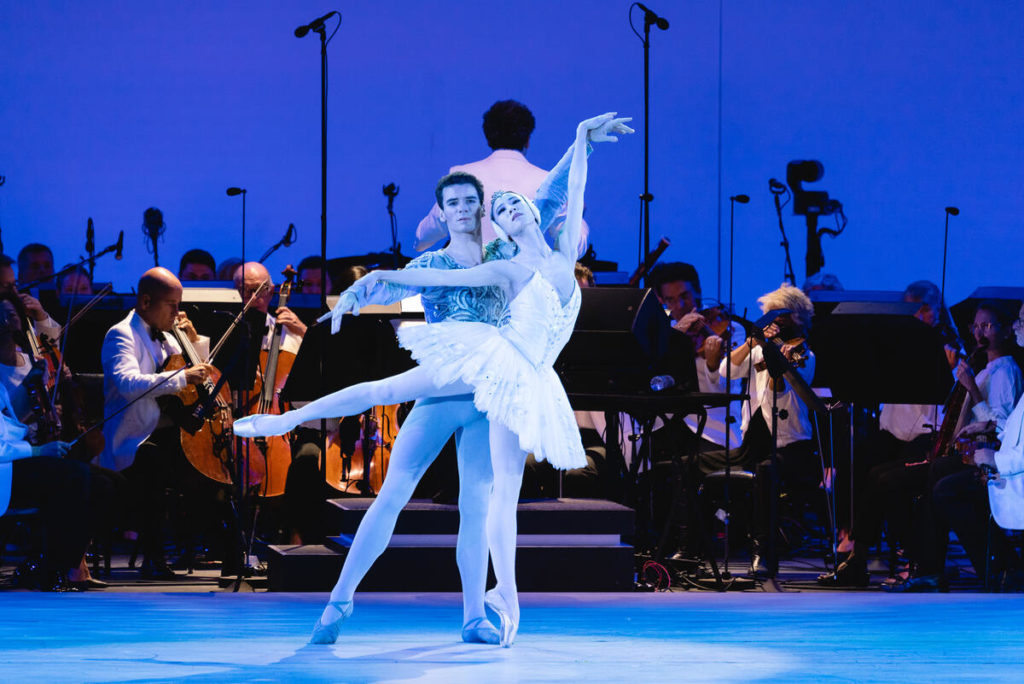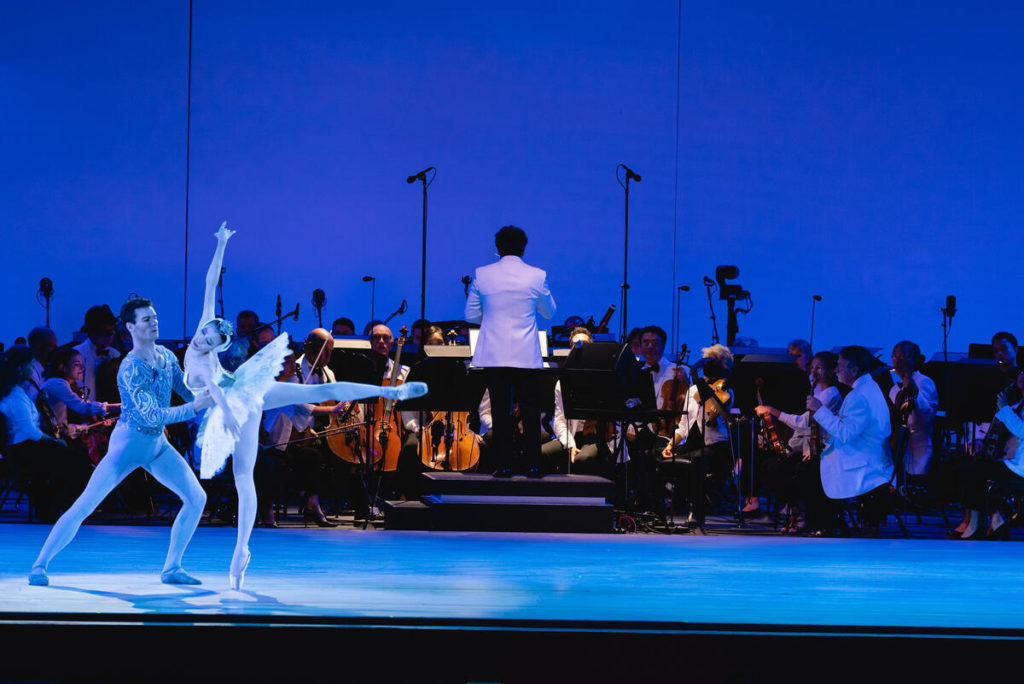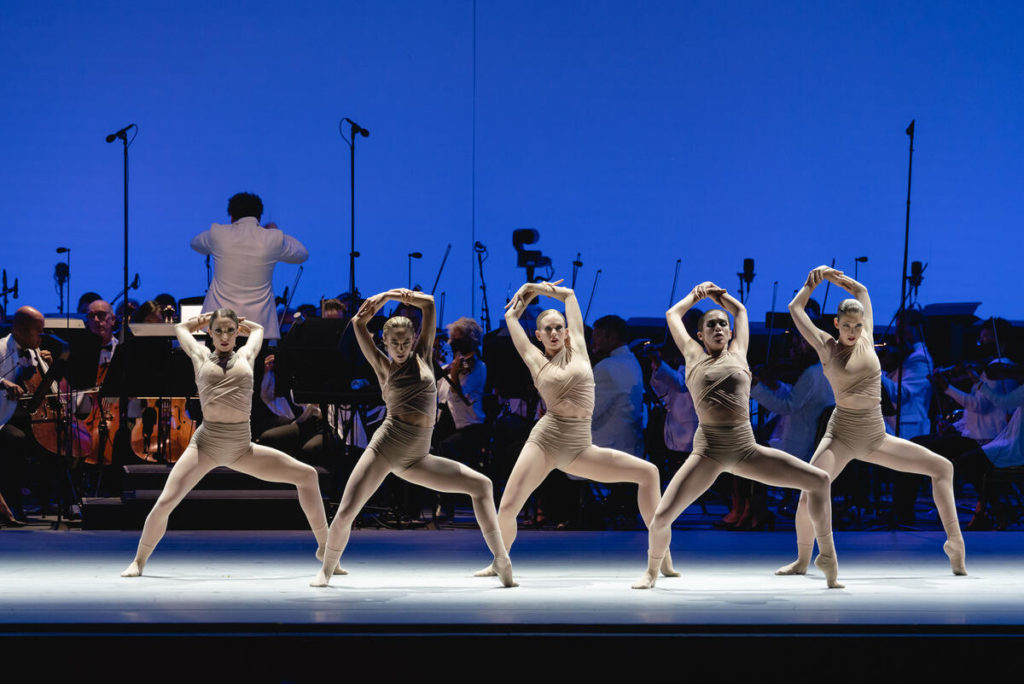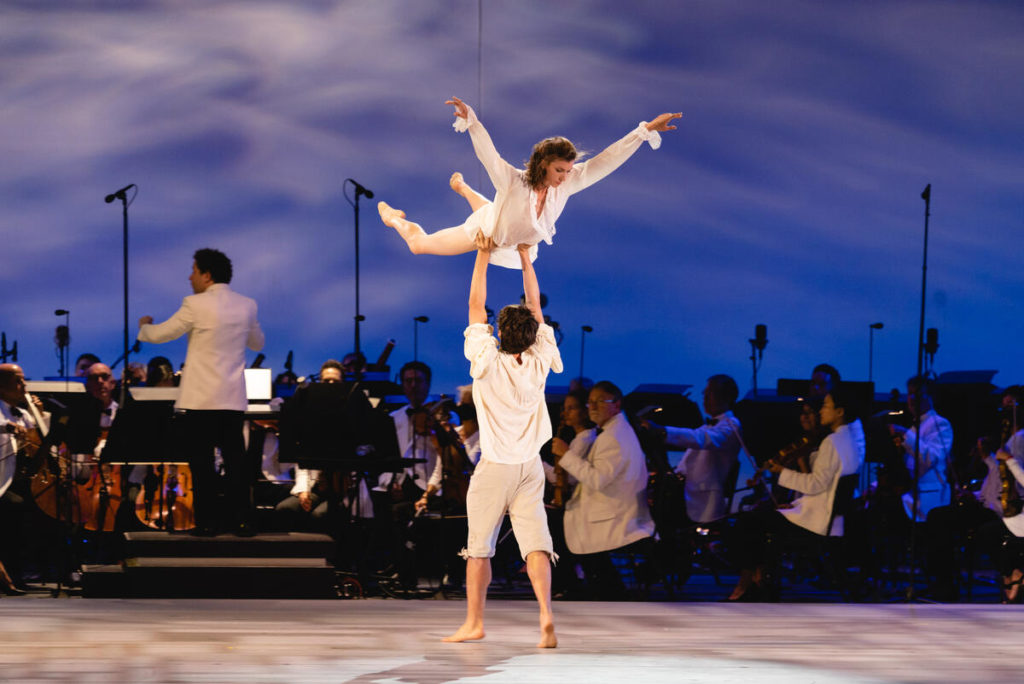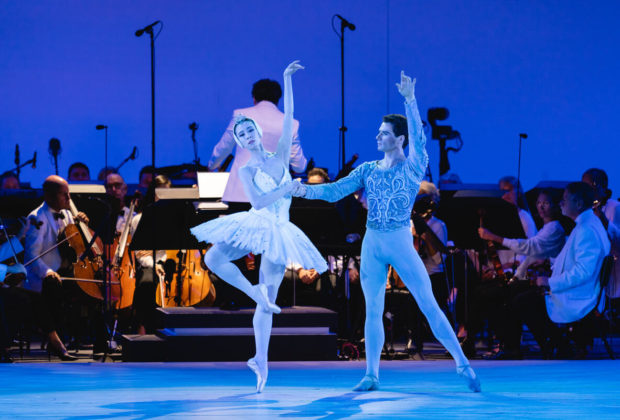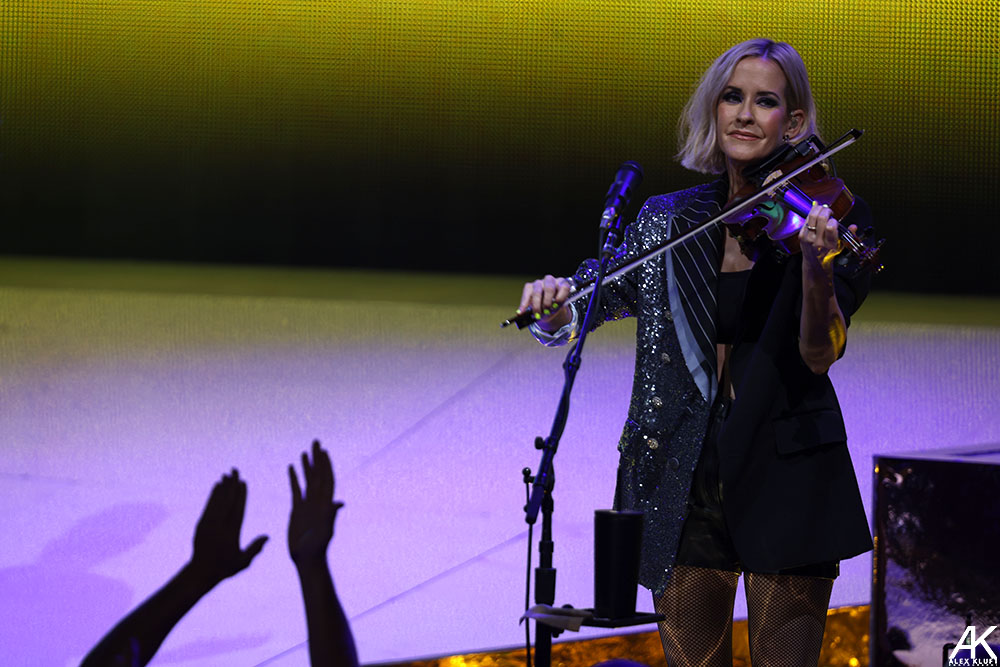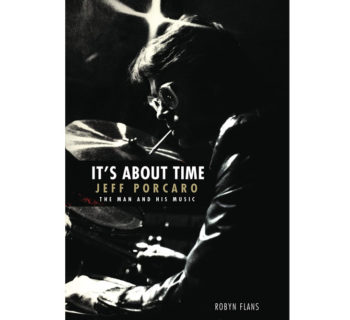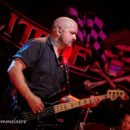By Jonathan Widran and Jessica Taylor
Making its first appearance in Southern California in 21 years, the Paris Ballet Opera – globally
renowned as a cradle of classical dance – brought to the Hollywood Bowl stage a unique fusion
of historical significance and contemporary timelessness, offering the deeply appreciative
audience hypnotic glimpses of its grandeur over the past 350+ years.
Their richly visual presentation was highlighted by Pas de deux (male/female duets) from Le
Parc and Swan Lake, a single ballerina creating the magic of a gliding swan (La Mort du cygne),
a solo male dancer illustrating the tender passions of Debussy’s “Clair de lune,” and larger
ensembles that used the wide expanse of the Bowl stage to bring Faunes and The Vertiginous
Thrill of Exactitude to kinetic life. The ballet came to the Bowl through its association with
longtime LA Phil Music Director and conductor Gustavo Dudamel, who has simultaneously
been Music Director of the Paris Opera Orchestra since 2021.
Throughout several of the eight pieces presented, the music and movement were so beautifully in
synch that they often felt part of the same transcendent creative heart. That kind of impactful,
intuitive pairing reflects Dudamel’s commitment to the seamless bond between art forms. His
choice of repertoire to most delicately yet powerfully showcase the Ballet included five pieces
for full orchestra from Auber (the opening number “Grand Pas Classique”), Mozart (“Adagio
from Piano Concerto No. 23 in A Major” paired with Pas de deux from Le Parc), Tchaikovsky
(“Pas de deux from Swan Lake, Act II”), Debussy (“Prelude to the Afternoon of a Faun,” paired
with Faunes) and Schubert (the closing number “Finale from Symphony No. 9 in C Major,”
paired with The Vertiginous Thrill of Exactitude).
As mesmerizing, alternately adagio (slow-paced), allegro (up-tempo) and dynamically powerful
as the LA Phil was, it felt like the most endearing musical element of the evening was veteran
French pianist Jean-Yves Thibaudet. His magical tones transcended mere earthly music to create
works of pure beauty that could have stood on their own even without the dance presentation.
While he brought his inimitable magic fronting the orchestra on the Mozart piece, he was most
exquisite when accompanied by cellist Robert deMaine (on Saint-Saens’ “The Swan” from
Carnival of the Animals, paired with La Mort du cygnet) and in his solo spotlights on Satie’s
“Trois Gnossiennes,” and “Claire de lune.”
Although the larger ensemble pieces that closed each set were intended to awe by pure numbers,
colorful costuming and use of the stage, two of the Pas de deux, emphasizing intimacy and
romantic storytelling over sheer flashiness, combined to create the emotional core of the
presentation. Because the soft rhythm of the music so perfectly matched the leisurely pace of the
romantic, late night narrative, probably Dudamel’s most inspiring pairing of the night was
Mozart’s “Adagio” with the slow, classy yet sensuous dance from Le Parc. Both the female
(Laura Hecquet) and male (Germain Louvet)’s movements were deeply lyrical, and one
particular moment of the dance – where he was spinning her around while she was holding on to
his neck - was so moving and passionate that it inspired the audience to applause in the moment,
long before the conclusion of the piece.
Both were so controlled and graceful that all could feel their passion and strength throughout the
sequence of him lifting and twirling her, them leaping for joy, then her moving slyly around him until their lingering kiss, with him literally sweeping her off her feet. Thibaudet was pure perfection here, creating a flawless connection to the rising romantic tension and fulfillment with sounds surpassing mere notes. Rather than classic ballet costumes, the couple wore elegant white, flowing night clothes and danced in bare feet, as if to ground the lyrical choreography in a down to earth sensuality.
The Pas de deux from Swan Lake, with Sae Un Park and Paul Marque, was the most classical
dance of the evening, with Park dressed in a traditional classical white ballet tutu and dancing en
pointe the entire time as he twirled her slowly, her arms and legs up like the delicate unfolding of
a swan’s feathers. Theirs was a sensitive dance with a highly intuitive flow, creating an otherworldly harmonious chemistry. Though their movements were effortlessly elegant, they
possessed all the strength and skill of top athletes.
Though it was a true duet, Marque’s role was to literally and figuratively elevate Park to
showcase her beauty and grace and make sure she shone the whole time. Their innovative
presentation paired wonderfully with Saint-Saens’ “The Swan,” the opening number of the
second half that featured solo dancer Dorothee Gilbert (also dressed in a white tutu and
displaying pointe technique) using her skill and talent to artfully resemble a real swan. Dancing
on toe, she appeared to glide across a glassy lake while gracefully lengthening her outstretched
arms.
For those living in L.A., this whole evening’s performance felt like a much needed breath of
fresh air and escape from reality, even if it was just for one starry night.
